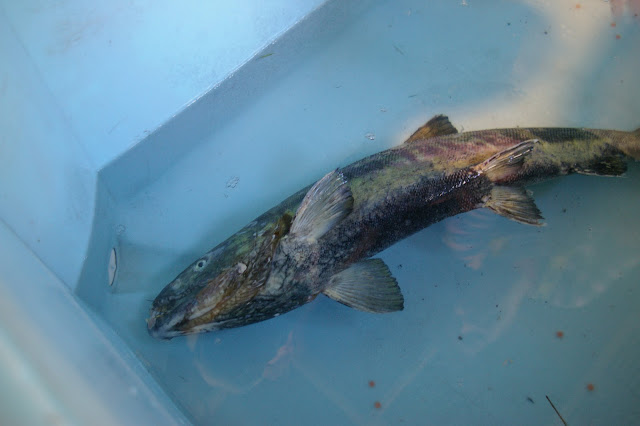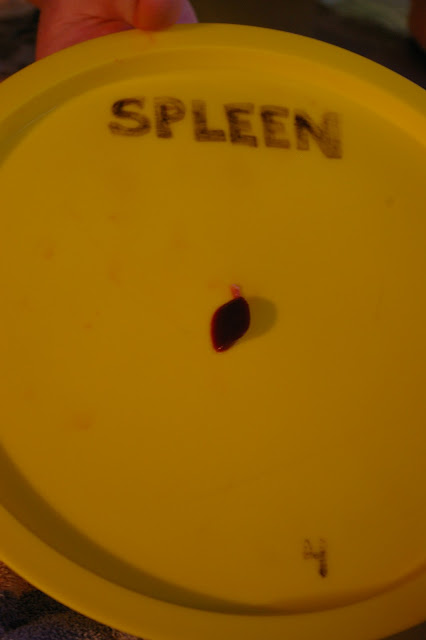 |
|
These grey fish are on the bottom of the stream are covered
with bacteria. They have died and have
started the decomposition process that will face all of the fish coming here to
spawn.
|
 |
| This is a Nurse Stump. Its decomposition supports new life. |
 |
| A huge ant hill |
 |
| Another huge ant hill |
 |
| Fallen trees like this one make perfect hiding places for salmon. Eagles and seagulls are just some of the many birds that come to feast as well as black bear and other animals. |
 |
| Can you see the female salmon in the middle of the image? |
 |
| There were many bent trees like this one along the pond. |
 |
|
This is a fish ladder; it helps the fish climb up a stream
that is otherwise too steep, or the current too fast to climb naturally.
|

 |
| A huge tree with thick moss all the way up and around it. |
 |
| This was a big tree on a slant. So huge it would have taken 4 adults to circle the base. |
 |
| More remains. |
 |
|
If you look at the back of the
stream, almost to the other side of the bank you will see a little bit of the
dorsal and back fin sticking out of the water.
This is a male.
|
 |
| A fallen tree that has now become a nurse log. Supporting various life. |
 |
| A female salmon in the big pond. |











































Wow! Fantastic photography and wonderful comprehensive and educational explanations.
ReplyDeleteGood work
Thank You for sharing
MJ
oh wow what an amazing adventure....we went to the hatchery in missouri on vacation this summer....was very cool...the boys enjoyed it much as well...and feeding the fish...smiles....that tree with all the moss is really cool....beautiful visuals of nature...
ReplyDeletegreat to see you ma'am...smiles.
Thanks for coming by MJ...
ReplyDeleteBrian, it was great to get out there and see this side of the life cycle... we will be going out there again in the spring and releasing some of the fish. It is so important to get the kids out there and respecting the environment that they live in. Thanks for coming by!